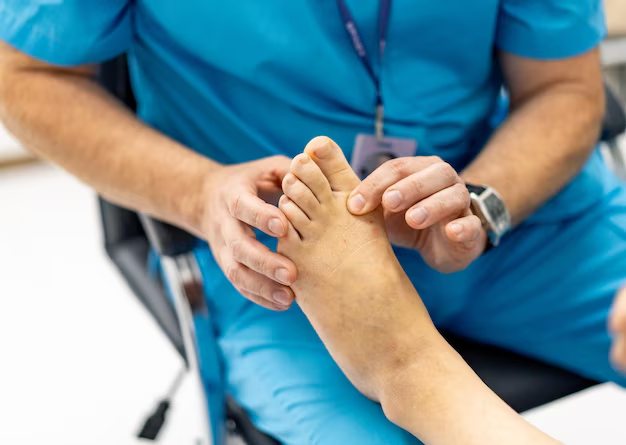Understanding Gout: Recognizing Symptoms and Managing the Condition
Imagine waking up one morning with an agonizing pain in your big toe. The joint is so tender that even the weight of a bedsheet feels impossible to bear. This vivid scenario is what many people suffering from gout experience. But what exactly is gout, and how can recognizing its symptoms lead to better management of this uncomfortable condition? Let's explore this medical enigma, its manifestations, and relevant aspects to consider.
What is Gout?
Gout is a type of arthritis that is characterized by sudden, severe attacks of pain, redness, and tenderness in joints. These attacks often occur unexpectedly, causing discomfort and inconvenience. Although it can affect any joint, it most commonly targets the joint in the base of the big toe. Let’s break down the mechanics of gout to understand why it occurs.
Gout is primarily caused by an accumulation of uric acid crystals in the blood. Uric acid is a waste product ordinarily eliminated by the kidneys through urine. However, some individuals produce too much uric acid or fail to excrete it efficiently, leading to hyperuricemia. When uric acid exceeds the bloodstream's solubility threshold, it begins to form sharp crystals that settle in the joints, provoking inflammation and pain.
Recognizing Gout Symptoms
The symptoms of gout can be dramatic in their onset and intensity. Familiarity with these symptoms can prompt timely management and minimize discomfort.
1. Acute Joint Pain
The most distinguishing feature of gout is the sudden and intense joint pain, typically occurring at night. While it frequently affects the big toe, other common targets include knees, ankles, elbows, wrists, and fingers. The pain is often excruciating, sometimes described as feeling like the affected joint is on fire.
2. Swelling and Redness
Inflammation is a hallmark of gout. The affected joint area can become noticeably swollen, warm, and red. This inflammatory reaction, technically referred to as synovitis, is triggered by the body's immune response to uric acid crystals.
3. Limited Range of Motion
Gout attacks can significantly restrict joint movement due to pain and swelling. The joint stiffness might make everyday tasks challenging, urging those affected to alter their routines.
4. Peeling or Itchy Skin
As the inflammation subsides, the skin around the affected joint may peel or feel itchy. This symptom occurs because the swelling stretches the skin, leading to discomfort as it recovers.
Factors Contributing to Gout
Understanding the factors contributing to gout helps individuals identify potential lifestyle adjustments to minimize their risk.
Dietary Causes
Gout has long been associated with diet, particularly the intake of foods high in purines. Purines are substances found naturally in certain foods like red meat, shellfish, and sugary beverages. When digested, purines break down into uric acid. An abundant intake of purine-rich foods can elevate uric acid levels, increasing gout risk.
Medical Conditions
Certain medical conditions are closely linked to gout, forming part of what is known as metabolic syndrome. These conditions include:
- Hypertension (High Blood Pressure): Can exacerbate hyperuricemia.
- Obesity: Increased body weight adds stress on joints and raises uric acid production.
- Diabetes: Sugar imbalances may influence uric acid metabolism.
Lifestyle Choices
- Alcohol Consumption: Alcohol, especially beer and spirits, can impede uric acid elimination from the body.
- Sedentary Lifestyle: Lack of exercise and movement can result in obesity and elevated uric acid levels.
Gout and Its Impact on Daily Life
Living with gout poses unique challenges as individuals navigate the discomfort and unpredictability of attacks. Below are a few ways gout impacts daily activities:
- Mobility: Limited ability to walk or move freely during flare-ups.
- Sleep Disruption: Nighttime pain can disturb restful sleep, impacting overall health.
- Emotional Well-being: Coping with chronic pain can lead to stress and frustration over time.
Practical Approaches to Managing Gout
Awareness and proactive strategies can significantly aid in managing gout symptoms and minimizing flare-ups. Here are some practical tips:
Dietary Adjustments
- Focus on Low-Purine Foods: Opt for foods with lower purine content such as fruits, vegetables, whole grains, and low-fat dairy products.
- Stay Hydrated: Adequate water intake helps the kidneys flush out uric acid.
Regular Exercise
- Adopt Gentle Exercise: Engage in low-impact activities such as walking, swimming, or yoga. These exercises help maintain joint flexibility and control weight, both essential factors in gout management.
Monitor and Manage Weight
Maintaining a healthy weight reduces pressure on weight-bearing joints and helps prevent excessive uric acid production.
Seeking Medical Attention
Although lifestyle interventions provide substantial support, professional medical evaluation is crucial for a comprehensive approach:
- Medical Diagnosis: Healthcare providers may perform blood tests to measure uric acid levels and confirm a gout diagnosis.
- Medications: Physicians might prescribe medication to reduce uric acid levels or relieve acute symptoms during attacks.
Insights and Next Steps
Understanding gout involves a multidimensional perspective. Embracing lifestyle changes and proactively managing symptoms can significantly improve quality of life for those experiencing this condition. Whether identifying dietary impacts or engaging in low-impact exercise, every step towards informed decision-making empowers individuals with the tools to live with gout more comfortably.
Summary: Making Informed Choices for Gout Management
Here’s a handy guide to recognizing and managing gout:
- 🔍 Understand the Symptoms: Acute joint pain, swelling, restricted motion, and skin peeling.
- 🍽️ Dietary Adjustments: Focus on low-purine foods and stay hydrated.
- 🏃♂️ Exercise: Engage in gentle physical activities to maintain joint health and weight.
- 💊 Seek Medical Guidance: Consult healthcare providers for diagnostics and potential medication.
- 🏋️♀️ Weight Management: Keep weight under control to reduce stress on joints.
By staying informed and adaptable, individuals can navigate the complexities of gout with a sense of control and resilience. As you encounter this condition in your journey, let knowledge be your guide towards a more comfortable and informed experience.
